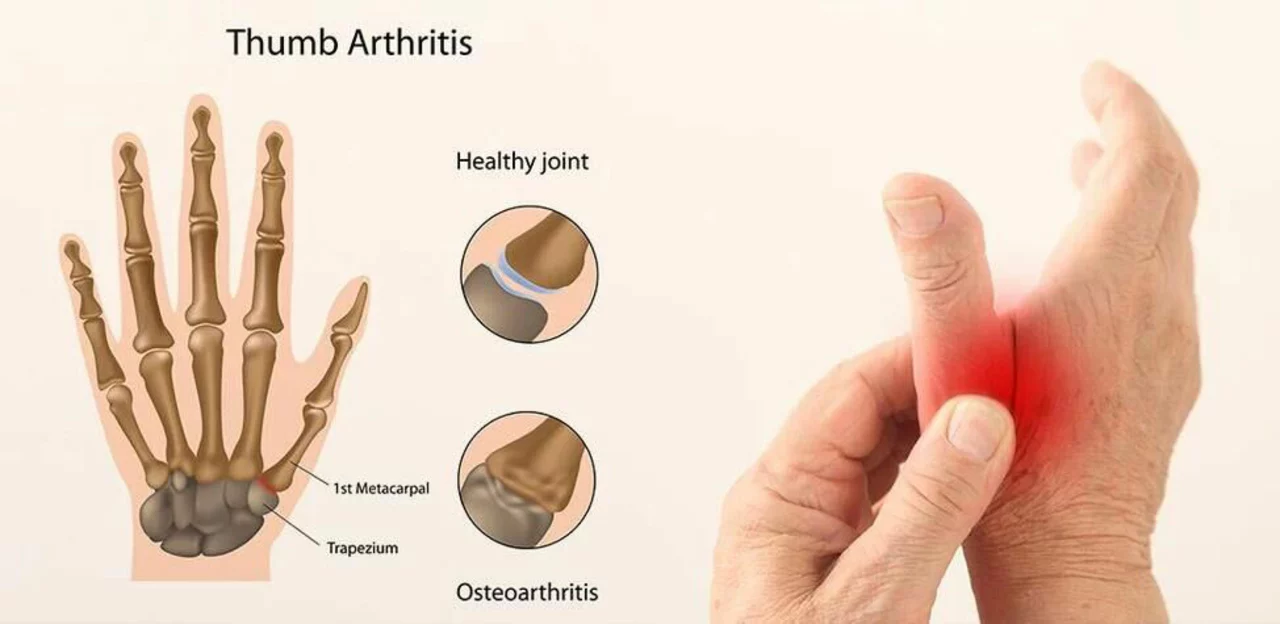Osteoarthritis: What Helps Right Now and Long Term
Osteoarthritis (OA) happens when joint cartilage breaks down and the whole joint reacts—pain, stiffness, and less range of motion follow. It’s the most common joint issue people face as they get older, but you don’t have to just accept worsening pain. Small changes can cut pain and keep you moving.
Simple daily steps that help
Move more, not less. Aim for 150 minutes a week of moderate activity—walking, cycling, or swimming—and add two short strength sessions for the legs and hips. Strengthening the muscles around a joint reduces load and pain; for knee OA, work on quads and glutes. If you’re overweight, losing even 5–10% of body weight often brings noticeable relief in knee pain and function.
Use heat for stiffness and cold for short-term swelling or sharp pain. Try a knee brace or cushioned shoes if joint alignment or gait makes symptoms worse. Simple assistive tools—grab bars, a shower seat, or a cane—can reduce strain and make daily tasks easier.
Medical options and when to act
Over-the-counter choices include topical NSAIDs and oral pain relievers; topical options often give good relief with fewer systemic side effects. If pain limits sleep, mood, or work, talk to a clinician about prescription options. Duloxetine (Cymbalta) is used for chronic joint pain when standard meds aren’t enough; corticosteroid injections can help short-term flares, while hyaluronic injections work for some people but are hit-or-miss.
Surgery—most commonly joint replacement—is for those whose pain and loss of function don’t respond to other treatments. It’s a big step but can restore mobility for many people. Discuss risks, recovery time, and realistic goals with an orthopedic surgeon.
Supplements are popular, but evidence varies. Glucosamine and chondroitin show mixed results; omega-3s may help inflammation. Tell your doctor about any supplements so they can check for interactions with other meds.
If you have sudden joint swelling, fever, rapid worsening of pain, or trouble bearing weight, seek care quickly—those signs can mean infection or a different problem. Otherwise, plan steady improvements: track pain, try a 6–8 week exercise routine, and adjust based on what helps.
CanPharm has practical reads that pair well with this guide:
- Personalized Exercise Plan for Preventing Acute Skeletal Muscle Conditions — builds safer workouts for joint health.
- Cymbalta: Everything You Need to Know — explains when duloxetine helps chronic pain.
- Hypertension's Hidden Toll on Bone Health — why heart and bone health link matters if you have OA.
Pick one change this week—start walking 10 minutes a day, try a short home strength routine, or book a check with your clinician. Small, consistent steps add up, and most people with OA can reduce pain and stay active without rushing into surgery.

Osteoarthritis and Travel: Tips for Managing Symptoms on the Go
As a frequent traveler, I've learned a few essential tips for managing my osteoarthritis symptoms while on the go. First, I always make sure to pack comfortable shoes and clothing to help reduce any joint pain. It's also crucial to plan breaks and rest periods throughout my journeys to give my joints some downtime. Additionally, I find that staying hydrated and maintaining a healthy diet can work wonders in alleviating discomfort. Lastly, I never leave home without my medications and a portable heating pad or ice pack for quick relief when needed.
- Health and Wellness (58)
- Drug Information (45)
- Pharmacy Information (19)
- Medical Conditions (17)
- Supplements (4)
- Diabetes (3)
- Travel Health (2)
- Parenting (2)
- Mental Health (2)
- Heart Health (1)
-
Unleash Your Body's Full Potential with Medium Chain Triglycerides
26 Jun 2023 -
Statins and ALS: What the Latest Science Really Says
23 Nov 2025 -
Amiodarone and Pregnancy: Safety and Considerations
16 Jul 2023 -
The Long-Term Effects of Atorvastatin Use
26 Jul 2023 -
How to Safely Buy Risperdal Online: A Complete 2025 Guide
12 Aug 2025

21.05.23
Alistair Mukondiwa
8